Read the rest of the series: Part Two | Part Three | Part Four | Part Five | Part Six | Part 7
This is the story of a battle, of a disastrous retreat, and the conspiracy which followed. If you're a really long time listener, I mentioned the battle briefly in my very first podcast episode, but other than that, I think the way the Maine Public Broadcasting Network named and introduced their two hundred year anniversary documentary on the battle sums it up pretty well:
Now let's start our look at Maine's role in the revolution by going back to "Penobscot: The Battle No One Ever Heard Of".
Well, it all happened right here, but you won't read about it in your history book.
Not many Americans even know about it for that reason and those that do, don't like to talk about it much. They figure it's best forgot.
- How come?
- Well, people don't like to hear about their country's defeats, even though there were heroes on both sides, the company Marines stormed the Heights back here in the face of hot fire. Drove the British back. Tough climb and a hard fight with heavy losses on both sides.
This was a naval disaster of epic scale. More than American forty warships and transport vessels were destroyed. Another America naval disaster of this scale would not be repeated until the Pearl Harbor attacks on December 7, 1941, more than 162 years later.
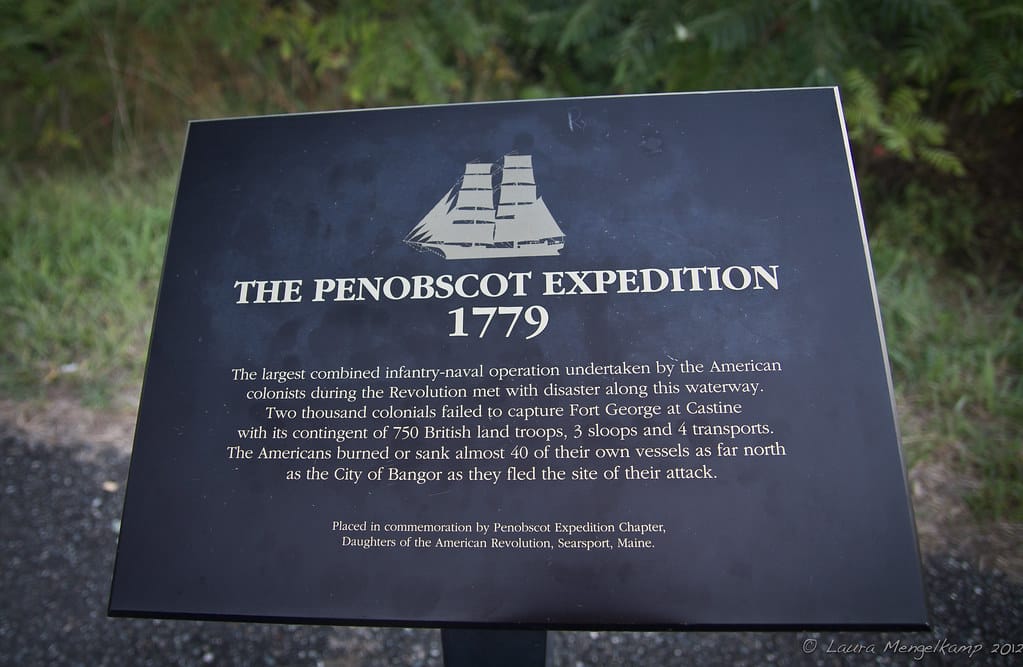
By this point in the Revolutionary War the shots fired at Lexington and Concord in the revolutionary hotbed colony of Massachusetts was more than four long years ago. Boston was almost immediately besieged by colonial militiamen until the British were forced to evaluate their soldiers and loyal colonial subjects away by sea since the colonial rebels (aka Patriotic Revolutionary Americans, hell yeah!) lacked the navy to hold the seas outside of Boston and force the besieged British to surrender.
It quickly became apparent to King George's cabinet in London that this was not a small-scale colonial uprising. Some of the King's advisors recommended a quick, decisive, overwhelming blow to knock the rebellion out before it could spread. King George's secretary of war advised him that the army alone would not be able to pacify the colonies and that he would require the help of the Royal Navy. The head of the British admiralty told the King that the Royal Navy was already stretched thin and there were not enough ships to devote a significant force off the coast of North America without leading the more valuable Caribbean colonies or even more disastrously the homeland itself vulnerable to France's smaller but still formidable navy close to home.
And so, for the first two years of the war, Britain fought a halfhearted war as she conserved forces close to home. She defended against an American attack into Canada and attacked in turn Charleston, South Carolina (unsuccessfully) and New York City (successfully). In 1777 the British disastrously attempted to cut the colonies in half along the New York City-Hudson River-Lake Champlain axis, but only managed to embarrass themselves before getting an army isolated from naval support, surrounded, and outnumbered at the Battle of Saratoga. The surrender of the remaining 6,000 men under the command of General Burgoyne at Saratoga was the final straw that drew the French into the war against their traditional British enemies. The rebelling American now had the backing of a great power, and soon acquired the backing of another as Spain and eventually the Netherlands also declared war against Britain in what was quickly becoming an opportunistic pile-on against and empire which had flown a little too close to the sun at the expense of all of its neighbors in the previous few decades.
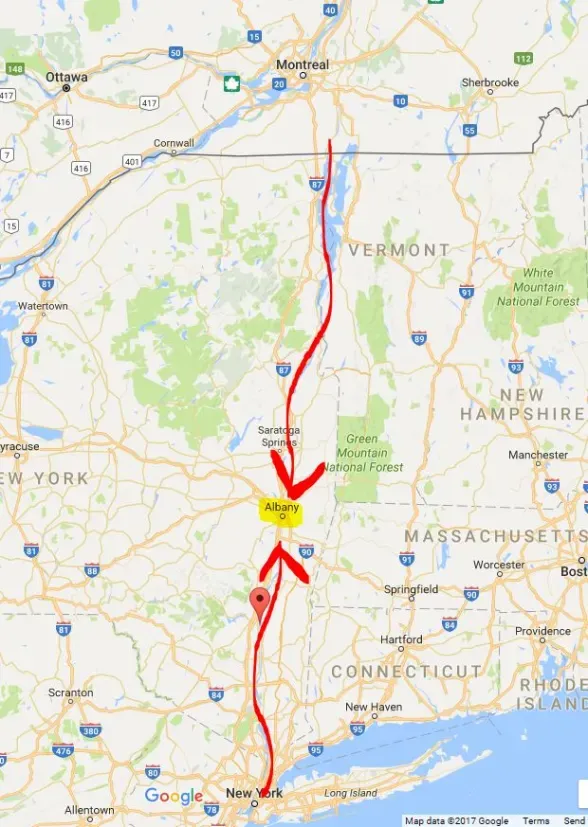
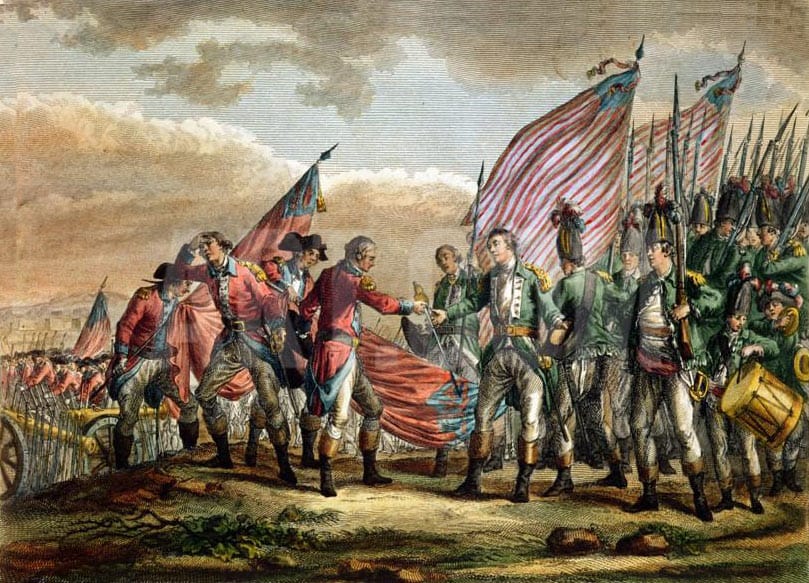
Still determine to fight it out, the British switched to a southern strategy. The warmer weather would allow the British army to operate all year long and the navy could offer full-year support in ice-free harbors and rivers to prevent another disaster like at Saratoga which was only possible for the Americans because the British army found itself too isolated from the logistical support and evacuation lifeline of the dominant Royal Navy. The friendlier local colonist and Indian population served served as an added bonus for the new southern strategy.
But shifting the majority of the war resources south meant that the British needed to make sure that their non-rebelling Canadian colonies remained protected from another rebel overland invasion. So, as part of a defensive strategy in the north and to provide a refuge to fleeing loyalists who were increasingly being from their homes with only the clothes on their backs in New England the fervently anti-British New England colonies, British General Clinton who now lead the war effort in North America directed the abandoned French fort on the Penobscot River manned and rebuilt. The fort was the linchpin of a plan to guard the mouth of Penobscot Bay in northern Maine (then a part of Massachusetts colony), prevent rebellious incursions north, and allow the bulk of the British Army and Navy to focus on operations in the south.
(re)Building Fort Penobscot
Fort Penobscot is at the tip of the triangular Bragaduce Peninsula. This is a little easier with a map, but imagine a bay which has a little triangular bit of land jutting out of it, and then, at the tip of this triangular piece of land, there is a French fort in bad disrepair, abandoned in 1704, some 75 years ago. And this fort is pretty much positioned to allow it to control the entrance to the Penobsoct River which leads from what is conveniently enough called Penobscot Bay into the heart of what is today Maine. Did I mention this is a little easier to think of with a map?
Ask and ye shall receive...
Oh wait, I did. And oh wait, guess what, this is announcement time! I have a new website (which you have presumably found if you are reading this)! Yep, after years of making this podcast I decided it's time to build the accompanying website. The website is still a work in progress but all future episodes will have an accompanying blog post. This blog post (you're currently reading it) will mostly be a transcript with photos, maps, illustrations, and some other supplementary material that didn't quite make it onto the actual podcast for clarity. You can signup for free and get an email whenever their is a new podcast episode or website post.
The time I've spent building the website is why it's been so long since the last episode. I only have so many free hours in the day and this show is a one-man operation and absolute labor of love (emphasis on the labor part!). But the show also costs a small amount every month to research, host, and produce. The local library doesn't have all the books I need, and I put far too many highlights and margin notes in my books in any case... so off Amazon for research materials it is.
All of this is to say... the show is and will always remain free, as will the website, but I'd love to at least stop losing money every month producing the show, and if the 50+ hours of content representing many hundreds of hours of work on my part over the past few years is worth a few bucks to you, there is a voluntary subscription option (click here) and I'd love to have your support at whatever level you're able to contribute at. Again, and I know I'm a great salesman with the hard sell here (haha), all of the content is going to be free forever, but if you join at various paid levels levels you can get a few small extras like a callout on the podcast and the ability to suggest a topic within reason, but mainly you get my thanks for parting with a few hard-earned bucks which I'll go ahead and exchange for more naval history books.
Back to the Revolutionary War
So, it's summer 1779, and the British send out a small squadron to fix up Fort Penobscot. The British expedition did not go unnoticed and word pretty quickly got back to Boston where the Massachusetts legislature concluded that if "a suitable force of shipping which with other assistance by Land- It is thought they [the British] might easily be defeated." (hint: they were wrong)
While Massachusetts decided to act, the British began unloading. 700 soldiers under General McLean began unloading supplies from the ships. The General himself romped around the abandoned French fort, inspected the firing lines and it's position relative to the Penobscot River he was guarding, and decided that in typical French fashion, the French had cocked it up when deciding where to build the fort, and decided that a new fort would have to be build from scratch a few hundred feet away the center of the small Bagaduce Peninsula on top of a small hill. This would afford the fort's cannons a better line of fire over both the entrance to the river and a small harbor that the peninsula formed in the bay.
General McLean issued a proclamation to the local area declaring it under British control. those who fought would be hanged, but those who cooperated would find him generous. And to back that up, General McLean offered cold, hard cash. The war had been disastrous for the local economy, and the previous winter had been extremely hard, with a huge portion of the population going hungry and cold. The patience for the rebellion was growing somewhat thin in this neck of the woods. Many families fled south and east away from British control, but more men were eager for paying work and volunteered for the relatively high wages on offer by the British to help build out the new fort. Work began and continued day and night, especially as General McLean received the news that there was a fleet growing in Massachusetts that intended to challenge his position. McLean sent a sloop to British-controlled New York City to request reinforcements and redoubled his orders for his soldiers, sailors, and hired laborers to work faster.
Still, by the time the American fleet arrived, the state of the fort was pitiful. The walls were just four feet high, stores lay scattered about in the open, and just a single gun was properly mounted. Forts were usually built over the course of many months with huge amounts of manpower in an age when horsepower meant actual horses if you were lucky and backbreaking manual labor if you were not. General McLean didn't have many horses, had only a month to prepare. He would have to face the American with what he had.
General McLean knew the Americans were coming, and one morning when the fog cleared, he found the entire American fleet of 40 ships at his in the harbor. The entire force had slipped past McLean's picket boats in the mouth of the harbor in the foggy night.
Alright, that's it, this is just the intro. I'm experimenting with shorter episodes which are more manageable to make and will also allow me to produce them more regularly. That being said...look out or another episode a few days from now instead of my usual you-get-when-you-get-it cadence. Until next time, Fair Winds and Following Seas.
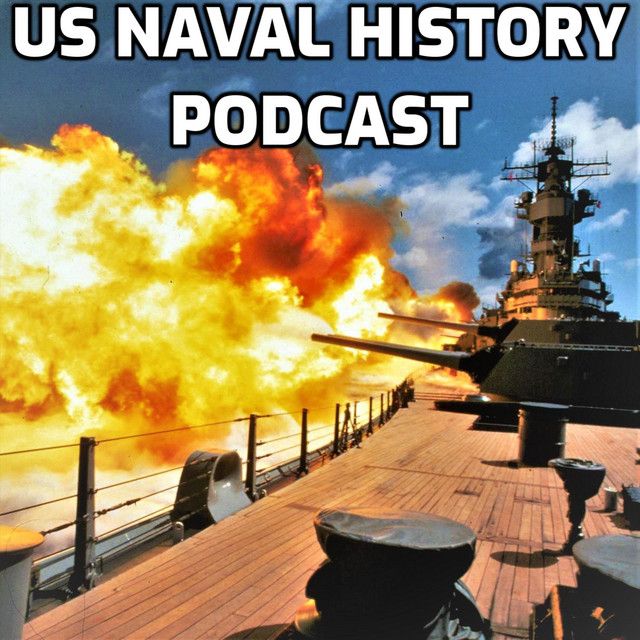
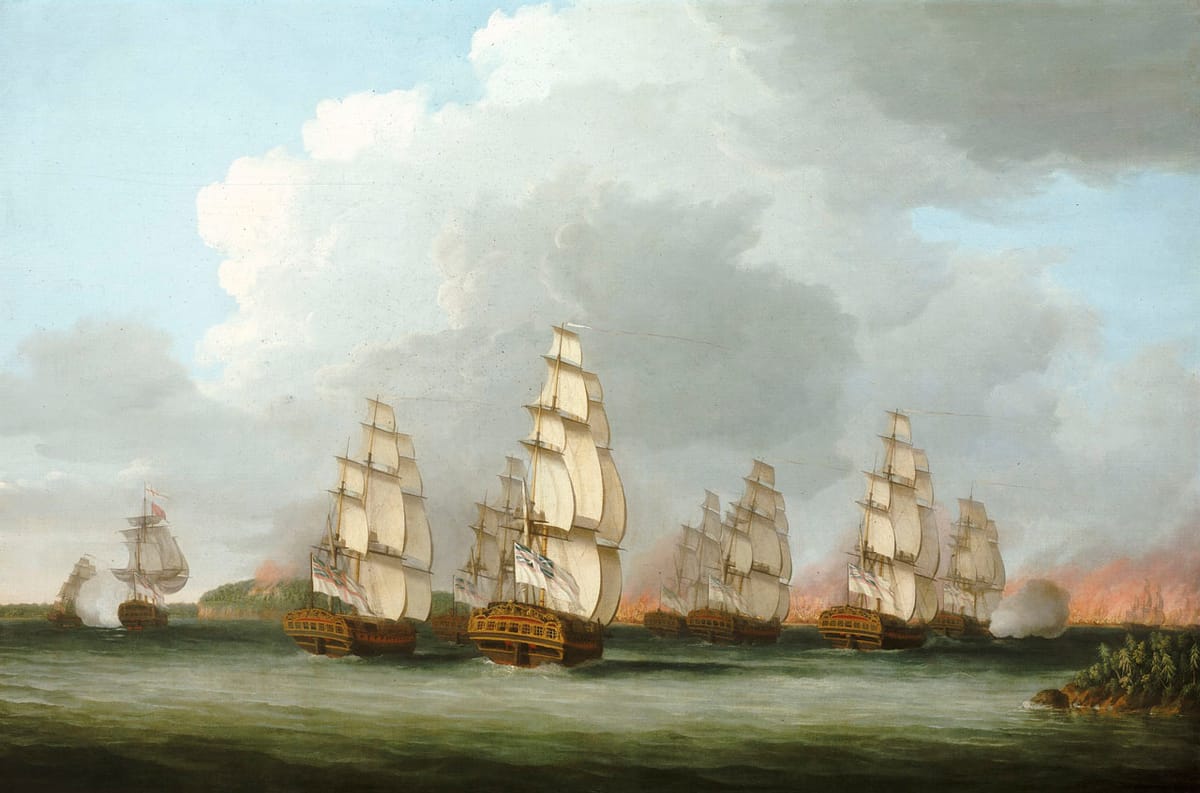

Member discussion: